In between penning the dashing adventures of the Three (or Four) Musketeers, novelist Alexandre Dumas explored the culinary arts in Le Grand Dictionnaire de Cuisine. When describing the truffle, Dumas gave the “gastronomes’ holy of holies” a bit of dialogue to describe herself. The truffle had five, simple words: “Eat me, and worship God.” Alas, for chocoholics, who might have been thinking that truffle salt referred to a sea salt-chocolate combo, Dumas wasn’t talking about the sweet stuff. Rather, the truffle in question was the forested fungi food group directly related to mushrooms.
Truffles are more than vegetables; they’re a lifestyle. From celebrities to casual cooks, truffles have found a home in many a palate for centuries. Sure, truffles can be a bit off-putting with their misshapen look, pungent odor, dull surfaces, and the fact that they’re a type of fungus. But if you’re one of the curious uninitiated who hasn’t yet tried truffles, truffle salt is the perfect introduction to spice up your favorite dishes while getting a hint of the truffle’s intense umami flavor.
Below is everything you’ll need to know about truffle salt. Online sourcing about salt should be taken with a grain of salt, so, short of DIY truffle hunting with a pack of trained hogs, personal taste testing and experimentation were employed to break down the ins and outs of this delectable seasoning.
What is it?

Truffle salt has taken the food world by storm in recent years, but its origins actually date back several millennia. Truffles entered the historical record in Ancient Egypt, where the mushrooms were cultivated as a royal delicacy. By the Middle Ages, one anonymous text, the Tacuinum Santis, recommended using truffles as medicine, made even better when mixed with oil, pepper, and salt. And it’s no wonder that spices were considered essential; one thing that we should know about salt is that civilizations were built on it, as many ancient peoples used salt blocks for currency and, later, to build up international trade. Salt was not just good for the palate, but human society as well. While this medical concoction might not have actually cured anyone, it no doubt made a tasty remedy.
In more recent times, the blend of truffle and salt has become a hip and trendy luxury seasoning for many favorite snacks and dishes, from French fries to salads. The heady mixture creates an earthy-‘n’-salty taste and texture that, as Emperor Nero once said, was “the delicacy of gods.” Today, truffle salt gives the modern palate a taste of what it was like to live like kings of yore.
What does it taste like?

Truffle salt, as its name suggests, is sea salt with grounded truffle bits. While most fungus fans probably consider the truffle part the most important, we shouldn’t overlook its partner: The salt. Truffle salts generally use sea salt, rather than table salt, and the distinction is crucial.
Table salt is finely ground, has iodine added, and is purer in terms of salinity content for cooking purposes, but sea salt is different. Sea salt is dried seawater and retains more diverse minerals for a richer, stronger flavor than just plain sodium. Sea salt crystals also tend to be larger than those of regular table salt, which makes it great for adding flavor and texture to your ready meals. Given its strong taste, a little bit tends to go a long way in terms of seasoning your food.
The truffles build on top of the sea salt’s mineral flavors by adding a hint of organic vegetable taste and aroma to the salt mixture. The overall effect is a genuine salt-of-the-earth that elevates your dish to the next level. For more on truffles, read on!
What about the truffle part?
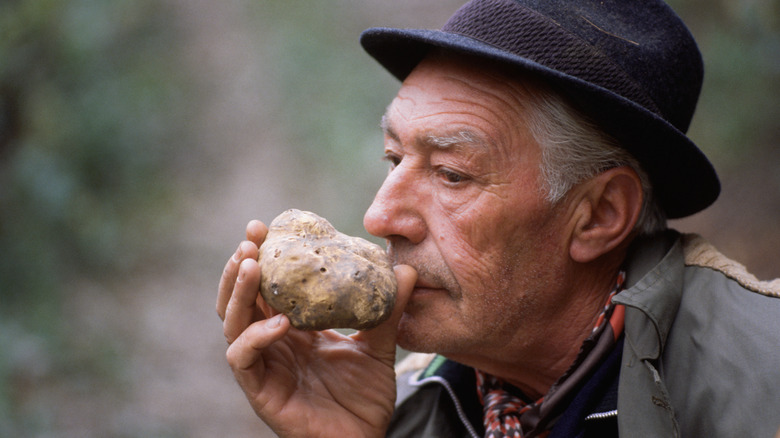
What sets truffle salt apart from regular salts are the truffles’ unique taste and aromas. Truffles have a reputation as the pinnacle of the fungi foods, and for a good reason. The difference between truffles and regular mushrooms is that truffles are much rarer to find simply because they’re harder to grow and locate. Truffles require specific conditions in terms of moisture, soil consistency, and temperature — all made more complicated because they grow underground and because their exteriors can resemble rocks. All this makes truffles much harder to find in the wild, and truffle hunting is a specialized skill.
As for the taste, truffles can have unique flavors, depending on the part of the world they come from. The scientific explanation for the truffle’s unique taste is the presence of androstenone, a chemical that gives off an earthy, musky scent. Like the garden variety of buttons and portabellas, truffles can also be juicy and savory, which adds to their mystique.
For truffle salt, the truffles are finely ground and mixed into the salt. Truffles’ scent is pretty strong, so a little dash can go a long way in flavoring an entire dish. The ratio between truffle to sea salt can vary, depending on the brand, price, and taste desired.
How does it compare to other salts?

Valeriia Kuznetsova/Getty Images
When average diners are asked to “pass the salt,” they generally reach for the shaker next to the pepper. After all, salt really doesn’t need any further clarification when you simply want to add some sodium to your meal.
But let’s step back a bit and consider that, of the 16 types of salt, each has its own specific uses. Table salt is a standard reference to measure other varieties, from mild kosher salt to Himalayan black and pink salts that come from dry salt mines and are used to garnish salads and prep vegan-style cooking. Even sea salts, the base for truffle salt, are set apart by variations, such as sel gris, a gray Celtic sea salt that is harvested in clay basins. Sea salts are also graded by different consistencies, from unrefined sea salts, which retain their natural minerals, to refined sea salts where only trace amounts of minerals remain. Sea salts can also come in coarse or powder forms, depending on the brand and personal preference.
Truffle sea salt combines a hearty organic layer of fungi with the rich mineral flavors of salt and can be used to accent a variety of dishes, as explained below. Unlike other salts, truffle salt is generally not used during cooking and is instead reserved as a finisher to top off your meals.
How many varieties are there?
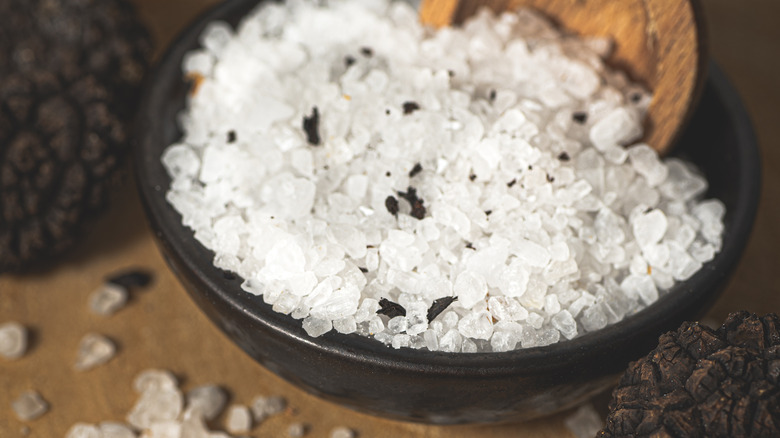
When Mario and Luigi need to get super-sized, they just tap a power-up truffle. Alas, the Mushroom Kingdom isn’t accessible for truffle salt, but there is still a vast variety of truffles and salts to choose from, depending on their sources. Truffle Farm, for instance, lists some popular blends, such as Sabatino Tartufi, which contains Sicilian sea salt and summer truffles, and Ubani, which contains Italian truffles and salt from France’s Guerande region.
As you might have guessed, European sea salts, especially from around the Mediterranean, tend to be higher priced due to their quality. In addition, some sea salts are harvested by hand, which makes production costlier and the amount of salt per batch limited. In this respect, France’s fleur de sel is different from other sea salts in its price tag alone, costing upwards of $30 per pound.
The same goes for truffles. Most truffle salt uses black truffles rather than white truffles for one good reason. The difference between white and black truffles is that white truffles are much rarer (they are only available in one Italian forest), have a much shorter shelf life (five days at most), and are much more expensive. However, white truffles can be more flavorful than black truffles, and many discerning chefs are willing to meet their price tag.
Where can I find truffle salt?

Truffle salt is readily available in regular supermarkets, such as Walmart and Kroger, under standard brand labels. But if you are looking for higher grades of salts, head on over to specialty gourmet cooking shops, like Williams-Sonoma, or browse specialty retailers online. If you’re tuned into social media, you can check out celebrity testimonials and endorsements, such as Oprah’s favorite shopping list, and you’ll no doubt find a special blend that can make your dinner table the talk of the town.
When navigating the world of truffles, one thing to remember is that if a particular truffle brand seems like a bargain, it might be too good to be true. Some truffle oils and salts might not contain any truffles at all. Artificial ingredients and synthetic ingredients can mimic the taste of truffles without using the real thing. If you’re looking for all-natural truffles, check the ingredient listing to make sure that 2,4-dithiapentane and other synthetic additives are not listed. That way, you’ll make sure the truffle seasoning that reaches your dinner plate is worth its salt.
How do I cook with it?
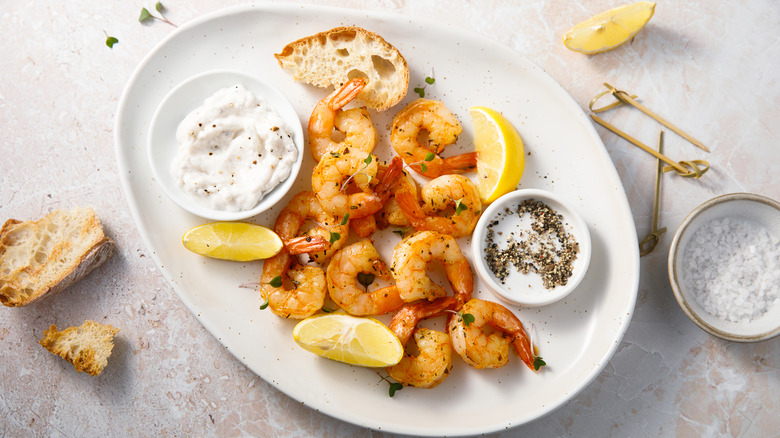
Actually, it’s better not to cook with truffle salt. Truffle salt isn’t intended for cooking. This seasoning is a garnish and is sprinkled on already-prepared foods to add a salty umami flavor. In this respect, truffle salt is very versatile. It can be as easy as sprinkling the salt on popcorn, using it to upgrade a snack board of crackers, cheese, and fruits, or swirling it into a bowl of olive oil to make a dip. For main courses, truffle salt works well with pastas and pestos — a given, considering that some of the best quality salts and truffles come from around Italy — and also with mashed potatoes and steaks if your palate is more inclined towards meats and potatoes.
One of the best uses for truffle salts is to revive leftovers. During refrigeration, leftovers tend to absorb their salt content, which can turn a killer dinner into a cold body of bland food. Adding a pinch of truffle salt can rejuvenate the taste, although you should be careful not to add too much salt. If you happen to have leftover herbs, mix the greens into your truffle salt to preserve them. The mixture will create a new perfect flavored salt to use on your next favorite recipe.
How healthy is it?

Once we hear the dreaded news that we need to cut back on our favorite foods as we age, it’s like rubbing salt in a wound. When it comes to asking yourself how much salt you should eat, remember that the body needs salt to help keep your muscles and body system in balance. The problem is with excessive salt, which leads to heart and blood pressure complications.
Truffle salt’s nutritional values can complicate your salt intake. Sea salt can come in refined and unrefined variations. While there is no real nutritional difference between the two versions, refined salt might have added minerals, like iodine and chlorine, while unrefined salts retain their natural minerals.
The main nutritional value of truffle salt comes from the mushrooms. Dr. Axe adds that truffle salt that has real truffle pieces — as opposed to truffle flavoring — will contain the proteins and carbohydrates properties that help with anti-inflammatory and antioxidant needs. UrbanGround also notes that truffles can help with blood circulation and break down fats stored in the body. Although more research is needed, Healthline suggests that truffles can even battle some types of cancer.
That said, if you have a low-sodium diet, truffle salt can do more harm than good. Check the nutritional and ingredient labels before making truffle salt a regular part of your healthy diet.
How do I store truffle salt?
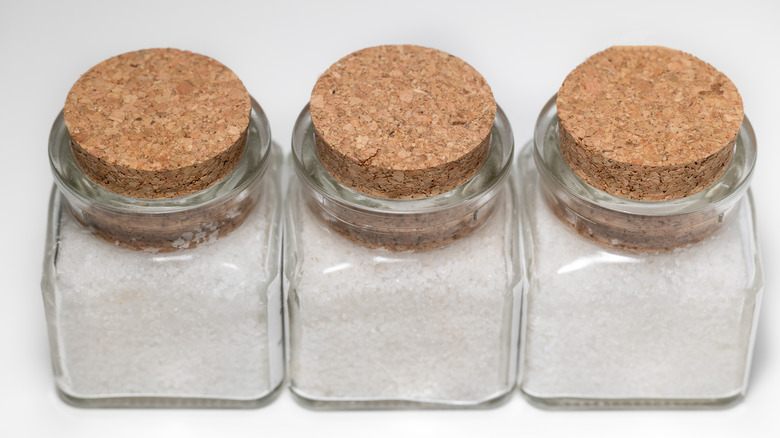
When it comes to salt, storage can be as easy as tossing the salt shaker into the pantry. But it turns out that keeping salt fresh and pure can require a few extra steps. Many modern cooks keep their salt in a salt box, a porous container that is designed to keep salt fresh by allowing it to “breathe.” The box also prevents bacteria and moisture from seeping in, and is perfect for measuring that special “pinch” when needed.
But for truffle salt, the mushrooms require a little more TLC to retain that earthy aroma and taste. According to Sabatino Truffles, truffle salts have a shelf life of only one to two months after opening. The pantry is still the best spot to house all your salts, since it’s a cool, dry environment and away from direct sunlight. Savory Spices notes that keeping truffle salt in an airtight container — many shops offer truffle salt in resealable bags — can prolong the shelf life by up to four months.
Layering a sheet of plastic food wrap under the lid of your salt box can also help flavor-lock your truffle salt. Or, you can place your entire salt box into a resealable freezer bag. Not only will it keep the truffle salt from losing its pungent punch, you’ll also keep the truffles’ scent from overpowering the other herbs in your kitchen.
Can I make my own?
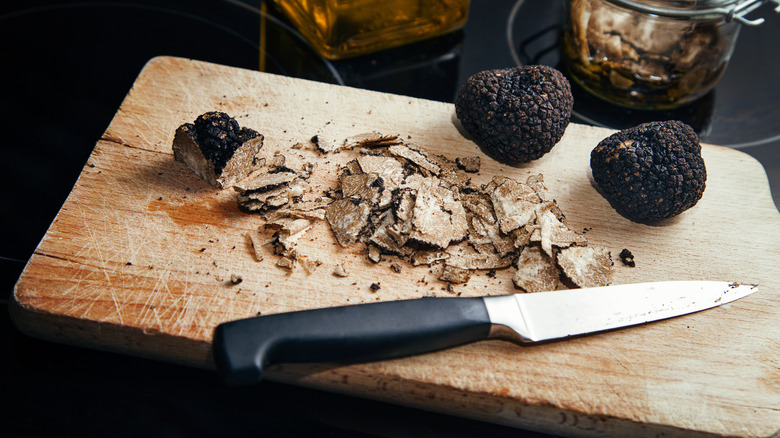
Yes, you can! Truffle salt is easy to mix. If you’re a mushroom maven or a salt vampire, you can customize your truffle salt to fit your taste.
The hardest part of prepping truffle salt is the truffles themselves. Truffles are expensive and range up to thousands of dollars per pound, depending on the type. Whatever the truffle, you’ll need to look out for specific smells, looks, and textures when buying fresh. Truffles should be completely firm and free of grit or dirt.
Obviously, moist truffles don’t mix with dry salt. If you have fresh truffles, as opposed to preserved ones, you’ll have to dehydrate them. But don’t ruin this fancy ingredient by roasting it in the oven. The heat will burn your truffles to cinders. Rather, dry the truffles with a dehydrator or simply leave them out until they have a brittle texture. Once they’re ready, grate or grind the truffles by machine or hand and mix them into the salt. Feel free to add seasonings and herbs, such as chili flakes or garlic.
If truffles are outside your budget, don’t break the piggy bank. Instead, experiment with substitute mushrooms. One great substitute for black truffles is the black trumpet mushroom, which has a similar flavor at a fraction of the price. If your grocer doesn’t stock black trumpets, look for shiitakes and add a drop of truffle oil into the mix to get that classic aroma.
What else can you do with truffle salt?

As noted above, truffle salt was a cure of sorts in the medieval world. That legacy lives on today in the form of salt therapy, such as rubs, baths, and aromas that can help soothe the soul and refresh the body.
Salt therapies are an especially effective way to detoxify your skin and rejuvenate your pores. Select Salt reports that various forms of salt solutions, from simple saline nasal sprays to immersive salt baths provide relief for a number of ailments, including bacterial infections and eczema. When preparing a salt bath, don’t use table salt; sea salts are much more effective because they contain minerals and vitamins that are transferred directly into your body. The truffles bring antioxidants into the mix, and you can add additional scents and minerals, from avocado oil to lavender to enhance the solution.
If you prefer a drier form of salt therapy, a salt body rub is a fantastic way to decontaminate the skin. One caveat about a dry rub is that sea salt crystals can be coarse and irritate the skin during prolonged rubbing. If the salt rub isn’t working for you, no need to throw the truffle salt out. It turns out that salt rubs are also a wonderful salt hack for the kitchen to clean your pots and pans. And should any spill, just toss it over your left shoulder for good luck.







